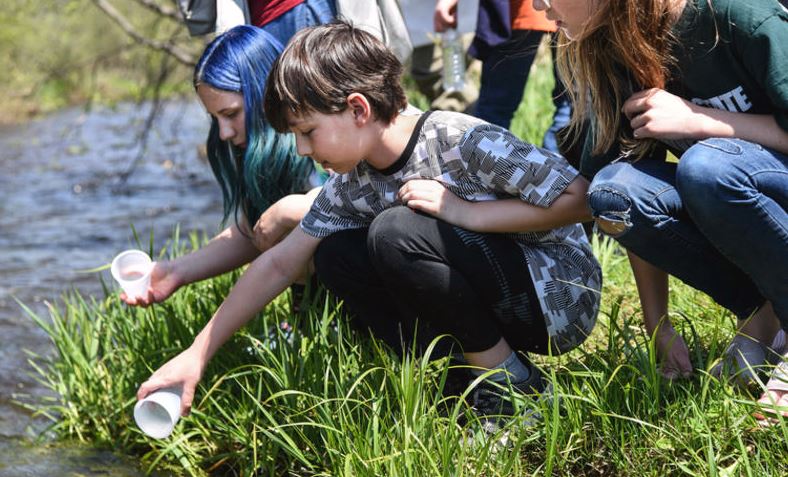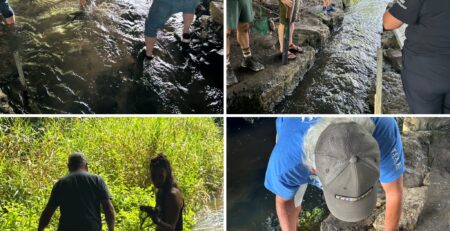All Your Questions about Trout Releases Answered

It’s April and our education team is kicking off the 2024-25 release season with our Trout in the Classroom (TIC) schools! From now through the end of May, we will be joining hundreds of students around the state at these exciting events. Here are answers to some of the frequently asked questions about trout releases.
Where do students release their fish? All fish are released into bodies of water approved by the school’s DNR fisheries area manager. The area managers also work with the pathology lab to finalize release site approvals each year. These waters are already being stocked with rainbows by the DNR, so our trout are never being released into bodies of water where they don’t already exist. The Twin Cities schools have three site options for their releases, the Vermillion River in Farmington, Browns Creek in Stillwater, and Cenaiko Lake in Coon Rapids. Cenaiko is a new release site approved for us this year. Other release sites include the Little Cannon River, Whitewater River, Grindstone Lake, and Spruce Creek near Miltona.
How big are they when released? From barely an inch to over five, there is wide range of sizes on release day! Teachers can experiment with growth rates based on the temperature of the tank and the amount of food they feed. Trout grow more quickly in warmer tanks thank colder ones. Due to their small size when released, our fingerlings are mostly a protein boost to the watershed for not only for other fish, but also turtles, herons, otters, kingfishers, large aquatic insects such as giant water bugs, and more. When I was assisting with a release with on the Clearwater River near Bemidji a few years ago, a very large snapping turtle showed up in the area of river we were releasing. It hung out along the shoreline about six few feet down the river and enjoyed an it could eat trout fingerling buffet before disappearing into the depths.
How many are released? Each school receives around 300 eggs in December, and anywhere from 25-275 of them are released in the spring. Most tanks have some level of die off throughout school year due to water chemistry issues, equipment failure, cannibalism among tankmates, etc.. It is normal and to be expected that fish will die during all stages of development, even in the most well-run tanks. From the beginning of the year, I remind teachers that the number of trout released in the spring not the focus of the program. The learning the happens with and around the trout throughout the school year is what is important!
Are they ever tagged/marked to know if any survive? This would be a very difficult thing to implement for a variety of reasons, so for now there is no tagging or marking happening with our TIC trout. There have been a few TIC fish discovered through DNR shocking surveys during the fall following their release. Due to their size and how those bodies of water are managed, they could only have been TIC trout!
What else do students do at the release day? The release itself doesn’t take very long! Schools with small groups typically release all of their trout upon arrival, while larger groups use the release as one of their activity rotations. A lot of the approved release sites are in parks or locations where students can engage in other activities such as looking for aquatic macroinvertebrates, nature hikes, fishing, and more. Each year a few lucky schools get the opportunity to release fish with the DNR fisheries staff during their release.

